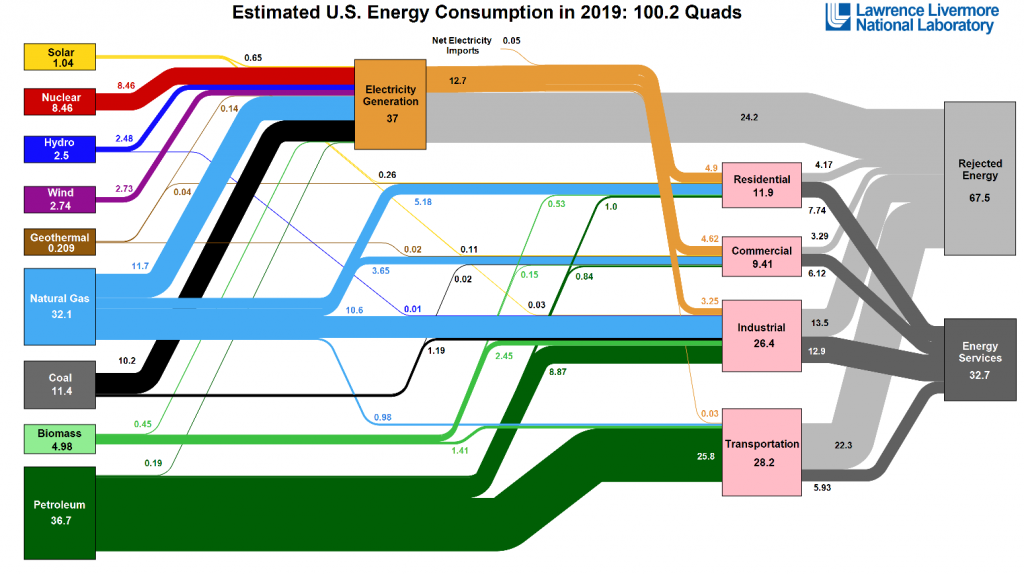
I think this illustrated graph of U.S. Energy Consumption for 2019 is worth taking a close look at in order to gain a little understanding of how we use, and loss, energy. The “rejected” energy blocks represent efficiency loses that are not usable. One of the big ones is the 24.2 lost from electrical generation. About 1/3 of the power gets to the user, the rest is lost in generation and transmission. Unfortunately, this diagram includes “transmission loses” within generation loses. About 18 quads are transmission loses and about 6 occur during generation. Another interesting one is the transportation portion of petroleum use. When powered by internal combustion, about 80% is lost to heat, 20% to motion. Clearly there are a lot of opportunities to make major reductions in primary energy use through conservation and switching how and where power comes from.
The task before us with regard to CO2 production and global warming is daunting. We need to decrease the energy consumption on the right-hand side by a combination of improved efficiency and changing what we do. We also need to decrease the use of natural gas, coal and petroleum for energy production. There are issues beyond CO2 production that come into play and need to be considered. For example, beyond the problem of burning natural gas(NG) producing CO2, the drilling and shipping of NG releases vast amounts of methane into the atmosphere. Therefore, reducing the amount of NG used, also reduces the amount of another green house gas in the form of methane. Coal has a similar double or triple advantage in the form of less destruction of the environment (lakes, rivers, mountain tops, etc), but reduces the amount of many pollutants (including radioactive compounds) into the environment. Similarly, capturing methane at landfills to produce electricity also reduces the amount of methane released into the atmosphere.
However, some “improvements” such as increased use of biomass is very problematic if that entails wholesale destruction of vast stretches of forest lands while harvesting trees to be ground up for use as bio-fuels. Diverting methane from land fills is one thing, cutting down thousands of square miles of forest is entirely different. Not all solutions are created equal in terms of green house gas reduction and overall improvements to the environment (or at least, reduced degradation of the environment).
This is a very complex problem, one that has dollar signs associated with each of these paths. Part of the problem is that the dollars in terms of costs and benefits are not distributed evenly. It is almost a zero sum game, where each increase in one location is accompanied by a lose in another – and different people or organizations own and control the various paths.